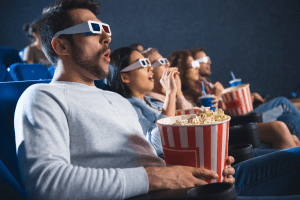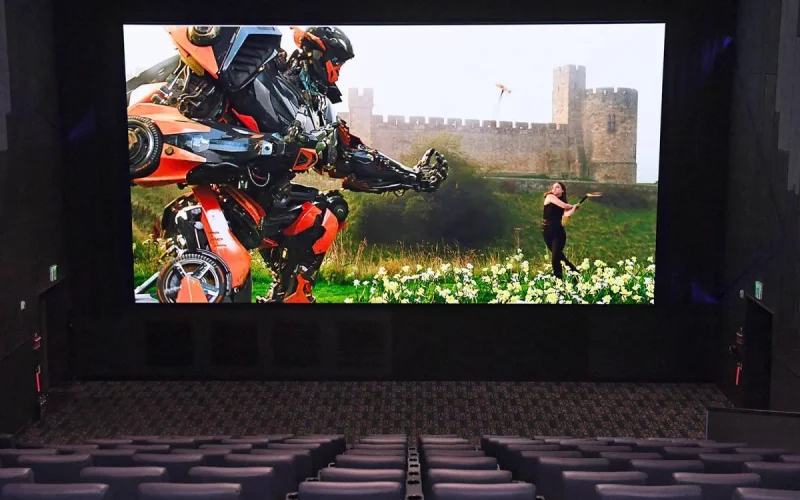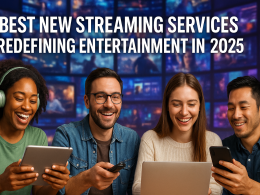Introduction
The movie theater industry has undergone significant transformations over the past few decades. From the golden age of cinema to the rise of home entertainment systems, movie theaters have had to continuously adapt to changing consumer preferences and technological advancements. As we look to the future, several trends and innovations are poised to shape the landscape of movie theaters. This article will explore these trends and innovations, providing an informative overview of what we can expect in the coming years.
Enhanced Viewing Experiences

-
Immersive Technologies
One of the most significant trends in movie theaters is the incorporation of immersive technologies. IMAX and 4DX are already popular, but advancements in virtual reality (VR) and augmented reality (AR) are set to revolutionize the viewing experience. These technologies offer audiences an unparalleled level of immersion, making them feel as though they are part of the movie.
-
High Dynamic Range (HDR) and 4K/8K Resolution
The quality of the visual experience is a critical factor in attracting audiences to movie theaters. HDR and higher resolution formats like 4K and 8K provide stunningly clear and vibrant images. These technologies enhance the overall viewing experience, making it more appealing for moviegoers to choose theaters over home entertainment options.
-
Advanced Sound Systems
Sound quality is just as important as visual quality in creating an immersive experience. Dolby Atmos and other advanced sound systems offer multi-dimensional soundscapes that envelop the audience, making them feel as though they are part of the action. Future innovations in sound technology will continue to enhance the auditory experience in movie theaters.
Personalized and Interactive Experiences

-
Personalized Content
With the advent of big data and artificial intelligence, movie theaters can now offer personalized content recommendations to their audiences. By analyzing viewing habits and preferences, theaters can tailor their offerings to individual tastes, making the movie-going experience more enjoyable and relevant.
-
Interactive Screenings
Interactive screenings are becoming increasingly popular, allowing audiences to participate in the movie experience. This can include voting on plot directions, engaging in live Q&A sessions with filmmakers, or even participating in interactive games related to the movie. These experiences create a more engaging and memorable outing for moviegoers.
Convenience and Accessibility

-
Online Ticketing and Seat Selection
The convenience of online ticketing and seat selection has already transformed the way people go to the movies. Future innovations will likely include more advanced features, such as dynamic pricing based on demand, personalized seating arrangements, and integration with other entertainment services.
-
Mobile Apps and Loyalty Programs
Mobile apps and loyalty programs are becoming essential tools for movie theaters to engage with their audiences. These apps can offer personalized recommendations, exclusive content, and special promotions, enhancing the overall customer experience and encouraging repeat visits.
-
Enhanced Accessibility Features
Inclusivity is an important trend in the future of movie theaters. Enhanced accessibility features, such as closed captioning, audio descriptions, and wheelchair-accessible seating, will ensure that everyone can enjoy the movie-going experience.
Sustainable Practices

-
Eco-Friendly Design
Sustainability is a growing concern in all industries, and movie theaters are no exception. Future theaters will likely incorporate eco-friendly designs, such as energy-efficient lighting, sustainable building materials, and waste reduction initiatives.
-
Green Operations
In addition to eco-friendly design, movie theaters will adopt green operations practices. This can include recycling programs, reducing single-use plastics, and implementing energy-efficient technologies to minimize their environmental impact.
Diversified Offerings

-
Alternative Content
Movie theaters are no longer limited to showing just movies. They are increasingly offering alternative content, such as live sports events, concerts, and theater performances. This diversification allows theaters to attract a broader audience and generate additional revenue streams.
-
Event-Based Screenings
Event-based screenings, such as film festivals, themed movie nights, and special premieres, are becoming more popular. These events create a sense of community and excitement, drawing audiences to the theater for unique experiences that cannot be replicated at home.
The Role of Streaming Services

-
Collaboration with Streaming Platforms
Rather than viewing streaming services as competition, movie theaters are finding ways to collaborate with these platforms. This can include exclusive theatrical releases of streaming content, joint marketing campaigns, and hybrid release models that offer both in-theater and at-home viewing options.
-
Hybrid Viewing Models
Hybrid viewing models, where movies are released simultaneously in theaters and on streaming platforms, are becoming more common. This approach caters to different audience preferences, allowing people to choose how they want to experience new releases.
Conclusion
The future of movie theaters is bright, with numerous trends and innovations set to enhance the movie-going experience. From immersive technologies and personalized content to sustainable practices and diversified offerings, movie theaters are evolving to meet the changing needs and preferences of their audiences. By embracing these trends and innovations, movie theaters can continue to thrive in an increasingly competitive entertainment landscape.











